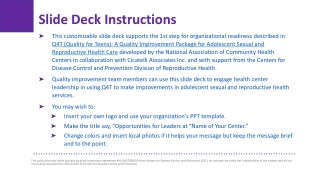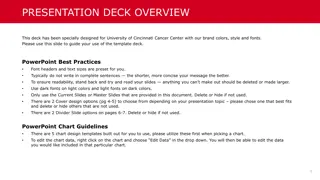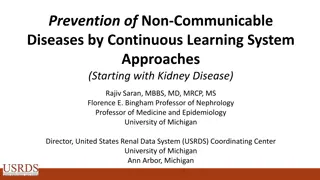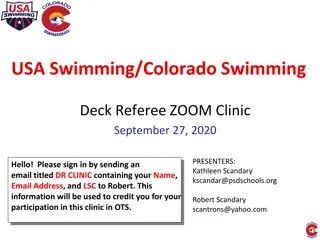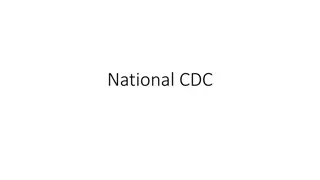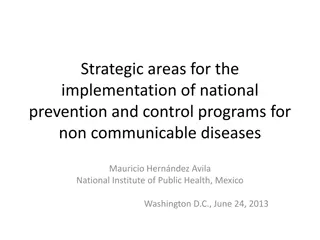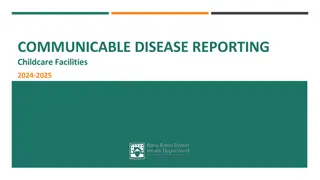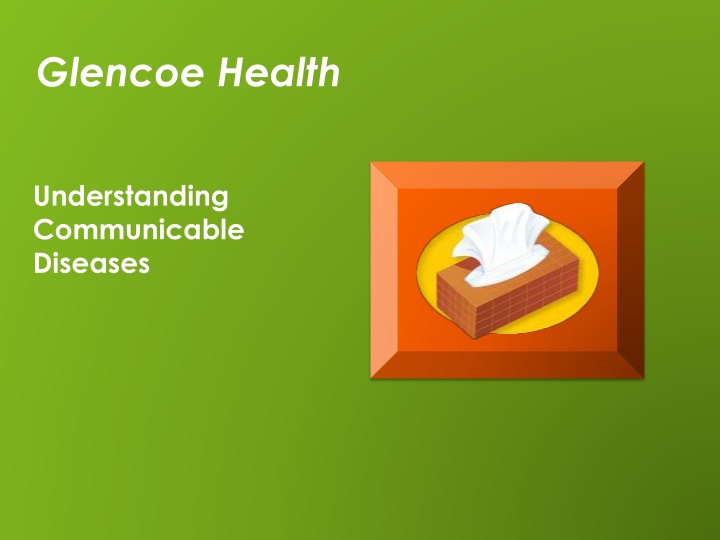
Communicable Diseases and Preventing Spread
Learn about communicable diseases and how they spread to prevent them effectively. Explore the causes, symptoms, and prevention strategies for common contagious illnesses like cold and flu. Boost your vocabulary with terms like pathogens, infection, and virus.
Download Presentation

Please find below an Image/Link to download the presentation.
The content on the website is provided AS IS for your information and personal use only. It may not be sold, licensed, or shared on other websites without obtaining consent from the author. If you encounter any issues during the download, it is possible that the publisher has removed the file from their server.
You are allowed to download the files provided on this website for personal or commercial use, subject to the condition that they are used lawfully. All files are the property of their respective owners.
The content on the website is provided AS IS for your information and personal use only. It may not be sold, licensed, or shared on other websites without obtaining consent from the author.
E N D
Presentation Transcript
Glencoe Health Understanding Communicable Diseases
Understanding Communicable Diseases Learning about communicable diseases and how they spread can help you prevent them. BIG IDEA New Vocabulary communicable disease bacteria pathogens toxins infection vector virus Lesson Home Glencoe Health Communicable Diseases Lesson Home
Understanding Communicable Diseases The Causes of Communicable Diseases Main Idea Communicable diseases are caused by several kinds of microorganisms. If you have ever caught an illness from someone before, you contracted a communicable disease. Lesson Home Glencoe Health Communicable Diseases Lesson Home
Understanding Communicable Diseases The Causes of Communicable Diseases Communicable diseases, also known as contagious and infectious diseases, occur when pathogens enter your body. New Vocabulary communicable diseases A disease that is spread from one living organism to another or through the environment. Lesson Home Glencoe Health Communicable Diseases Lesson Home
Understanding Communicable Diseases The Causes of Communicable Diseases If your body does not fight off the invaders quickly and successfully, you develop an infection. New Vocabulary infection A condition that occurs when pathogens in the body multiply and damage body cells. Lesson Home Glencoe Health Communicable Diseases Lesson Home
Understanding Communicable Diseases The Causes of Communicable Diseases Lesson Home Glencoe Health Communicable Diseases Lesson Home
Understanding Communicable Diseases Viruses Two of the most common communicable diseases the cold and the flu -- are caused by viruses. New Vocabulary virus A piece of genetic material surrounded by a protein coat. Lesson Home Glencoe Health Communicable Diseases Lesson Home
Understanding Communicable Diseases Viruses A virus invades living cells The virus begins to multiply The virus begins taking over other cells Disease sets in The body s immune system jumps into action The virus is usually killed by the immune system Lesson Home Glencoe Health Communicable Diseases Lesson Home
Understanding Communicable Diseases Bacteria Bacteria live almost everywhere on earth. New Vocabulary bacteria Single-celled microorganisms. Lesson Home Glencoe Health Communicable Diseases Lesson Home
Understanding Communicable Diseases Bacteria Most bacteria are harmless. Some are even helpful, like the ones that help you digest food. Unfortunately, some bacteria do cause diseases. Lesson Home Glencoe Health Communicable Diseases Lesson Home
Understanding Communicable Diseases Bacteria Disease-causing bacteria can produce toxins. New Vocabulary toxins Substances that kill cells or interfere with their functions. Lesson Home Glencoe Health Communicable Diseases Lesson Home
Understanding Communicable Diseases Bacteria Antibiotics do not work against viruses. A bacterial disease can often be treated with antibiotics. However, some bacteria have become resistant to antibiotics as the bacteria has evolved. Lesson Home Glencoe Health Communicable Diseases Lesson Home
Understanding Communicable Diseases Factors that Influence Teens Plantlike organisms that can cause diseases of the lungs, the mucous membranes, and the skin. Fungi Single-celled microorganisms that are larger and more complex than bacteria. Protozoa Microorganisms that enter the body through insect bites. Rickettsias Lesson Home Glencoe Health Communicable Diseases Lesson Home
Understanding Communicable Diseases How Diseases Spread Main Idea Diseases can be transmitted in a variety of ways. Knowing how diseases are transmitted is your first line of defense against them. Lesson Home Glencoe Health Communicable Diseases Lesson Home
Understanding Communicable Diseases Direct Contact How Pathogens Spread Direct contact with an infected person Puncture wounds Contact with infected animals Childbirth Lesson Home Glencoe Health Communicable Diseases Lesson Home
Understanding Communicable Diseases Indirect Contact You do not need direct contact with a person to become infected. Indirect contact can result in exposure to pathogens that will make you ill. Lesson Home Glencoe Health Communicable Diseases Lesson Home
Understanding Communicable Diseases Contaminated Objects Touching a contaminated object can also result in picking up pathogens. Pathogens on your hands can be transferred to your nose, mouth, or eyes by touching them. To avoid spreading pathogens, wash your hands regularly and avoid touching your mouth, nose, or eyes. Lesson Home Glencoe Health Communicable Diseases Lesson Home
Understanding Communicable Diseases Vectors Pathogens are often spread by a vector. Diseases that spread this way are called vector- borne diseases. New Vocabulary Vector An organism that carries and transmits pathogens to humans or other animals. Lesson Home Glencoe Health Communicable Diseases Lesson Home
Understanding Communicable Diseases Contaminated Food and Water When food is improperly handled or stored, harmful bacteria can develop. Water supplies that become contaminated with human or animal feces can also cause illnesses such as hepatitis A. Lesson Home Glencoe Health Communicable Diseases Lesson Home
Understanding Communicable Diseases Airborne Transmission When an infected person sneezes or coughs, pathogens are released into the air as tiny droplets that can travel as far as 10 feet. Other pathogens such as fungal spores are also small enough to spread this way. Lesson Home Glencoe Health Communicable Diseases Lesson Home
Understanding Communicable Diseases Taking Precautions Main Idea You can take steps to prevent infection. A few simple practices can dramatically reduce your risk of contracting communicable diseases. Lesson Home Glencoe Health Communicable Diseases Lesson Home
Understanding Communicable Diseases Wash Your Hands When to Wash Your Hands Before you eat After you use the bathroom After handling pets Before and after inserting contact lenses or applying makeup After touching an object handled by an infected person Lesson Home Glencoe Health Communicable Diseases Lesson Home
Understanding Communicable Diseases Protect Yourself from Vectors Protect Yourself from Vectors Limit the time you spend outdoors at dawn and dusk, when mosquitoes are most active. Wear pants and long-sleeved shirts to avoid insect bites. Use insect repellant, and avoid contact with dead birds. Lesson Home Glencoe Health Communicable Diseases Lesson Home
Understanding Communicable Diseases Other Prevention Strategies Avoid sharing personal items, such as eating utensils. Handle food properly. Eat well and exercise. Avoid the use of tobacco, alcohol, and other drugs. Abstain from sexual activity. Cover your mouth when you cough or sneeze, and wash your hands after using a tissue. Lesson Home Glencoe Health Communicable Diseases Lesson Home
Review Understanding Communicable Diseases After You Read Reviewing Facts and Vocabulary 1. Define the word communicable. Something that can be spread from person to person or through the environment. Lesson Home Glencoe Health Communicable Diseases Lesson Home
Review Understanding Communicable Diseases After You Read Reviewing Facts and Vocabulary 2. List three ways that communicable diseases are spread through indirect contact. Through contaminated objects, vectors, and contaminated food and water. Lesson Home Glencoe Health Communicable Diseases Lesson Home
Review Understanding Communicable Diseases After You Read Reviewing Facts and Vocabulary 3. How is a virus different from bacteria? A virus is a piece of genetic material surrounded by a protein coat, while bacteria are single- celled microorganisms that lie almost everywhere on Earth. Lesson Home Glencoe Health Communicable Diseases Lesson Home
Glencoe Health End of Communicable Diseases Understanding Communicable Diseases Lesson Home Lesson Home

